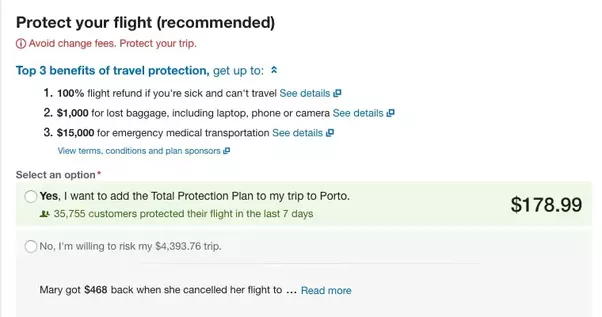Nudge vs. sludge – the ethics of behavioral interventions

One of the premises of behavioral science is the assumption that overall, people have good intentions. Nudging is meant to get them to do something that they are already interested in doing – such as stopping smoking, saving money or cycling to work – they just find it a bit hard and need some help on the way. At Impactually, we have the exact assumption when it comes to our clients: organizations that want to use nudging as a tool to influence behavior. We believe that overall, their intention is good and that they want to use nudging the way it was intended – to increase wellbeing. But since nudging can be a powerful tool that sometimes leverages unconscious biases, it is best to tread carefully. So in our workshops with practitioners we emphasize the ethical aspects of nudging. We find that most practitioners are genuinely interested and want to hear more, so we thought we’d explore the topic in more depth in this article.
In their book, “Nudge” Nobel Prize winner Richard Thaler and co-author Cass Sunstein propose this three ethical principles for the use of nudges (PS – still not sure what nudge is? Check out our article on the concept here). The first: the nudge should be transparent and never misleading. The second: the nudge should be easily opted-out of. And finally, “there should be good reason to believe that the behavior being encouraged will improve the welfare of those being nudged”. This criteria is key and to us it is the ultimate litmus test: is the nudge in the best interest of the person being nudged? If so, that’s great. If not, it is probably not a nudge, but something else.
How do we call a nudge, or a behavioral intervention, that violates this last principle? We like the term “sludge”, whose origins are unclear but has been endorsed and adopted by Thaler himself, thus giving it cred. In our trainings, we define sludge as a behavioral intervention that does not have the individual’s best interest in mind. It uses the same tools based on cognitive biases and choice architecture, to nudge people towards choices that will not necessarily increase their welfare (but might increase someone else’s).
As an example, think about all kinds of pre-selected choices that are made for us in an online environment. When booking flights, we are often “encouraged” to choose additional alternatives on top of the cost of our tickets. The “sludge-y” part is using non-transparent measures to get us to choose these options. Consider the example below:

In it, an airline booking website is using several behavioral tools to nudge us towards choosing to add flight insurance to our trip:
- “Recommended” (social proof)
- “Yes” option bigger + bold font (salience)
- “35, 755 customers protected their flight…” (social proof)
- “No, I am willing to risk…” (loss aversion)
- “Mary got $468…” (social proof)
Adding flight insurance is seldom in line with consumers’ best interest. The high cost, the low activation rate and the opaque demands by the airline company are clearly not in the best interest of the consumer. A clear sludge.
Another type of sludges are subscription traps – free trials with complex or unclear subscription processes or automatic renewals. Have you ever been tempted by a “one month free trial” offer that then locked you in to a paid subscription until you gathered the attention and willpower required to cancel? Did it invoice calling a call center in inconvenient hours, waiting in line or arguing with a sales representative eager to keep you as a paying customer? Sludge.


Any time that a company acts in a way that makes it harder for the individual to do the right thing it can be considered a sludge. An example that got a lot of attention and was crowned by Thaler as “sludge of the year” is Wells Fargo. The bank admitted to improperly charge 110,000 customers additional fees, and then added insult to injury by making it incredibly difficult to get reimbursed for these fees. To get their stolen money back, customers had to opt in by mailing Wells Fargo a form to get their check, following a letter from the bank. Wells Fargo itself expected only “half or fewer” of the customers would actually take the required action to get reimbursed. A win for the bank (if you don’t count the PR disaster), a loss for the individual. Sludge.
As we mentioned, we believe that most companies, just like individuals, have good intentions and want to design nudges, rather than sludges. How will you know that you are on the right path? In our trainings we go over a simple checklist. Does your intervention aim to help people live a healthier life? Spend their money wisely? Contribute to their long-term wellbeing? Is it good for the environment? Does it encourage saving of resources? Does it contribute to society? Is it a win-win for your company AND the individual? Congratulations, it’s a nudge! Go ahead. If, on the other hand, your intervention encourages people to live unhealthily, overspend their money, increase only short-term gratification, if it wastes the planet’s resources, if it is only a win for your company, not for the individual, then it is a sludge. Proceed at your own peril.
At the end of the day, we recommend to follow the tried and tested rule of thumb in the world of business ethics, called “The New York Times test”. How would you feel if your nudge ended up on the front page of the New York Times tomorrow morning? If you’d feel great about it, then it’s a nudge. If you’d feel so-so… then you probably should not be doing it in the first place.
We’ll finish with Richard Thaler’s plea: nudge for good.
Want to hear us talk more about the difference between a nudge and a sludge? Check out the free video which is part of our online course “Get behavioral science to work for you”. Video “The Ethics of Nudging” at the bottom of the course page.
You can also download our free and easy-to-use Introductory Guide, which introduces the foundations of the field for people who want to work with behavioral science and nudging in practice.

Have anything to say about the ethics of nudging? Feel like we’ve gotten it wrong? Write us!
—

Nurit Nobel
+46 76 191 71 34
I want to learn more!
We hear you. If you’ve already read our post about behavioral economics in practice, then here’s a list of books, TED talks and other online resources. You are also welcome to sign up to our newsletter, where we give you relevant news and links on behavioral economics.
I’m convinced that behavioral economics can do wonders for me. Now what?
Contact us and let’s talk about how we can help you get going.
DISCLAIMER
FOLLOW US
CONTACT
Web Design: Sharp Studio
Copyright Impactually 2020
